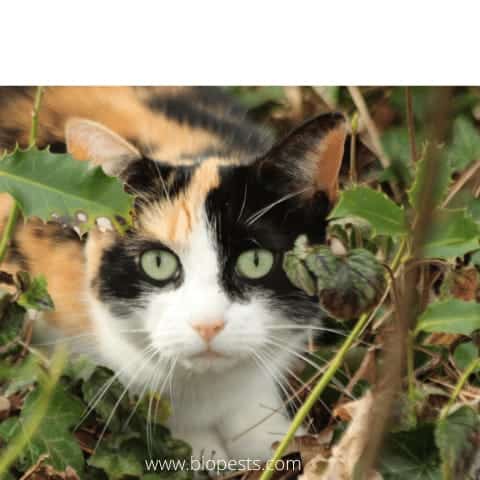If you are reading this article it’s probably because, like me, you too have discovered that the neighbor’s cats are using your raised garden bed as a litter box!
When planning my vegetable garden, I thought it would be a good idea to make raised beds since our soil is very much like hard clay. After building the raised bed frames, I packed them with organic matter (which was kindly granted by the neighbor’s stable).
Of course, I would never have believed that my raised bed would become the public litter box for all the cats in the neighborhood in just a few days!
To be honest, when I saw cat feces next to my green salad plant for the first time, I thought I’d give up and forever abandon my dream of having my own vegetable garden. I thought that knowing the sneaky nature of cats, I would never be able to keep them away from my garden.
Having to deal with cats took me by surprise. Before I started our vegetable garden, I took all precautions against the attacks by wild animals, such as wild boars and porcupines, which in my area are a real calamity. I never thought that cats also could be damaging my plants!
Anyways, I conducted a personal research and found that there are some effective methods to keep cats away from our plants.

Comics by AnatPlantz
15 Ways To Stop Cats From Pooping In Your Garden
To create deterrents for cats we will have to exploit their strong point: their sense of smell. Did you know that cats have a sense of smell 14 times more powerful than that of a human being? They are so sensitive to smells that they can go away permanently if they smell something that they don’t like.
The following list illustrates 15 ways to keep cats away from your garden. These deterrents are strictly organic, and safe to use. The best part is that you probably have most of the ingredients at your home!
1. Metal Fence Installation
It’s a physical barrier.
How to Apply: This fence is like the one used in chicken coops. Install the fence slightly tilted outwards to make it more difficult to access.
Pro & Cons: This method is the MOST efficient. It has a high cost of installation.
2. Citrus Peel
Cats hate the smell of citrus.
How to Apply: Sprinkle citrus peels on the ground near your seedlings. Repeat the operation every so often.
Pro & Cons: Quite efficient but you need to monitor the area constantly and replace the peels every day at least for the first week or so. If you forget to do so, you will soon end up cleaning your garden from cat feces AND citrus peel.
3. Essential Oils
Cats are very sensitive to strong smells.
How to apply: Sprinkle bits of fabric with natural fragrances such as thyme, lavender, and lemongrass and place them in small bowls here and there in your garden.
Pro & Cons: Quite efficient but you need to monitor the area constantly and replace it every couple of days.
4. Homemade Cat Repellent
Cats are afraid of water sprays.
How to apply: You can make your own homemade cat repellent by mixing 5 drops of rosemary oil, 5 drops of citrus oil with two cups of water.
Pour it in a spray bottle and spray it directly on the cat or surfaces (avoid your plants)
Pro & Cons: It is efficient if you are in the area. Needs some consistency in the beginning
5. Ground Black Pepper
The pepper makes the cat uncomfortable.
How to apply: When the cat will sniff the ground, the pepper will itch his nose and make him sneeze. The cat will associate your garden with places he is not comfortable with and will stop going there.
Pros & Cons: Very efficient also against other bugs and pests. A bit expensive
6. Plant Deterrent Plants
Cats cannot stand their smell.
How to apply: When planning your vegetable garden, put in some plants that act as a natural deterrent for cats such as Coleus Canina, Lavender, and Thyme. They grow quite fast. You can find the seeds here.
Pro & Cons: Works on some cats. Although the plants grow fairly quickly, it takes time and space to grow the plants
7. Motion Activated Water Sprinklers
Cats are afraid of water sprays.
How to apply: This device is activated every time there will be a motion on its range and will spray water on whoever approaches your garden (cat, raccoons, armadillos, etc)
Pros & Cons: Very efficient, but a bit expensive.
8. Repellent Mulch With Coffee Ground And Mistletoe
Cats can’t stand the smell of coffee.
How to apply: Place the mistletoe on the ground and make it uncomfortable for them to walk around. Sprinkle some old coffee grounds. This way you will gain a double effect: fertilize the soil and this drives the cats away.
Pros & Cons: Quite efficient and not expensive. You might need to replace it every month or so
9. Ultrasonic Deterrents
The ultrasonic waves will disturb cats’ sensitive hearing.
How to apply: These devices are usually solar or battery powered. They emit ultrasonic waves that annoy cats and other pests such as rats, raccoons, and stray dogs.
Pros and Cons: Quite efficient. A bit expensive. You might need your neighbor’s consent in order to install one of these devices. The device will not prevent all incursions but will reduce their frequency and duration
10. Cat Repellent Sprays
Cats hate the smell of these products.
How to apply: If you don’t want to bother preparing your own spray, this product is ready to use and is safe to use outdoors, even on your soil and vegetables.
Pros and Cons: Quite efficient and not very expensive. Needs some consistency in the beginning.
11. Floating Row Covers
This method will discourage cats from digging into your soil
How to apply: These row covers (or chicken wires) should be installed above the soil surface in order to discourage cats from digging.
Pros & Cons: Very efficient.
12. Catnip
Cats love catnip plants.
How to apply: Plant some catnip far away from your garden.
Pros & Cons: This method might not always work since it might not keep cats away from the places where they have already got used to urinating and defecating.
13. Arrange a few bottles of water near the garden
Cats are afraid of water.
How to apply: Fill few bottles with water and arrange them near the garden.
Pros & Cons: Although at zero cost, it may not work for all cats. Some are just too smart.
14. Tinfoil
Cats are bothered by the metallic feeling of tinfoil.
How to apply: Place tinfoil on the ground and in places frequented by cats. They should be bothered by the sight and the noise it makes on contact.
Pros & Cons: Very cheap, however, it is time-consuming and gives a messy look to your garden.
15. Provide the cats with a New Litter Box
Cats love a nice clean litterbox!
How to apply: Place tinfoil on the ground and in places frequented by cats. They should be bothered by the sight and the noise it makes on contact.
Pros & Cons: Very cheap, however, it is time-consuming and gives a messy look to your garden.
Why Cats Are Attracted By Raised Garden Beds?
These sneaky animals are attracted to raised beds for the same reason that we often find them resting on the top of cars. Cats are attracted to soft, slightly sandy, and warm soil. Very often, this is exactly the consistency of your raised beds. If your raised bed is in a secluded spot, even better for cats, since they like their privacy while doing their business.
In my garden, I had filled my raised beds with horse manure. It must have heated up in the sun and attracted all the neighbors cats. The strange thing is that usually, these animals do not like strong smells. I assumed they will not get near horse manure, but I was wrong… they have made an exception for horse poop …
Can We Use Cat Feces As Fertilizer?
Some people may wonder: since we use horse and cattle manure as fertilizers, why not leave the feces of cats in our vegetable garden and let nature take its course?
The answer is a positive NO. Cat feces carry harmful bacteria that can be dangerous to humans. The feces, although biodegradable, can take a long time to break down, and become safe. They should never be used as a fertilizer for vegetables intended for consumption. Horses and cows are herbivores, while cats are mainly carnivores. These feces are very different and not comparable to each other. The same is also true for dog feces.
Technically, it is possible to transform cat feces into fertilizer for flower beds or plants not intended for human consumption. This process can take a long time, even up to two years. That’s the time it takes for all the organic matter to break down into carbon dioxide, water, and biomass and become free of its toxic residue.
Using cat feces as a fertilizer for edible vegetables could be dangerous to your health and that of your loved ones. I will talk about this in the next paragraph.
Are Cat Feces In Your Vegetable Garden Dangerous?
As I said before, cat feces in our garden aren’t just an aesthetic problem. This issue needs to be seriously addressed because cat feces are the main vectors of dangerous diseases for humans.
The two main diseases transmitted by cat feces are:
- Toxoplasmosis
- Campylobacter infection
Toxoplasmosis:
This is a disease caused by the infection of a parasite, Toxoplasma Gondii. The infection usually occurs by the ingestion of the parasite through contaminated vegetables. In individuals with a healthy immune system it usually does not cause major problems.
The symptoms are usually mild: often asymptomatic, possibly manifested by swelling of the lymph glands, fatigue, headache, sore throat, and sometimes fever. Toxoplasmosis, however, is dangerous for the fetus if it is contracted during pregnancy: the infection can, in fact, cause malformations or abortion. For this reason, pregnant women are often recommended to take a blood test that allows them to know if they are already immunized, and therefore had contracted the disease in the past or if they are at risk of contracting the disease.
To prevent infection, one may need to wash hands and cook the vegetables well. It will also be useful to use gloves to handle vegetables or other foods that may be contaminated by this parasite.
Campylobacter infection
Another fearful infection that cats can transmit through their feces is bacteria of the genus Campylobacter, which is one of the main causes of gastroenteritis in the Western world. The main symptoms of this infection are fever, diarrhea, sometimes with blood and stomach ache. The infection can be contracted by direct contact with the animal’s feces, or through the ingestion of contaminated food.
Which Plants Can Repel Cats?
As I said before, it is possible to fight cats in a gentle way without harming them. In fact, there are many plants in nature that are very pleasant to the human sense of smell but very unpleasant for cats. Among these, the most common are mint, lemon balm, chives, sage, lavender, and rosemary.
We can add these plants to the list as well:
Coleus Canina
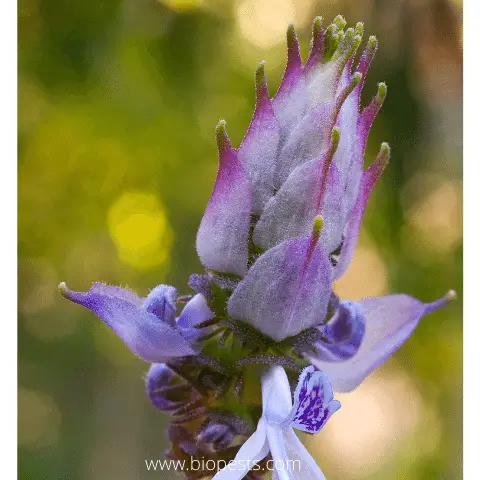
This plant is renowned throughout the world for its repellent properties towards cats and dogs. Cats are particularly sensitive to its odor and can’t stand it. By rubbing its leaves, it gives off an unpleasant smell even for us humans.
This plant is fairly available and grows very quickly. It should be planted in spring. It has an effective decorative effect with its light green leaves and flowers with delicate lilac shades’.
Odorous Verbena (Aloysia Citriodora)
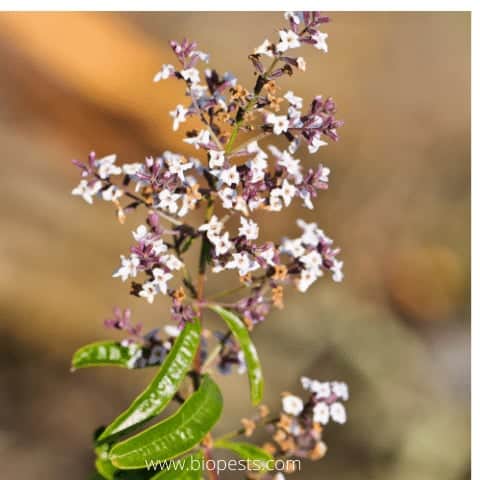
This plant, native to South America, gives off a citrus aroma. It has pretty purple flowers and is particularly decorative. In optimal climatic conditions, it is a perennial plant, but where the winters are particularly cold it should be grown as an annual. It is possible to prepare excellent herbal teas with this plant.
Ruta Graveolens
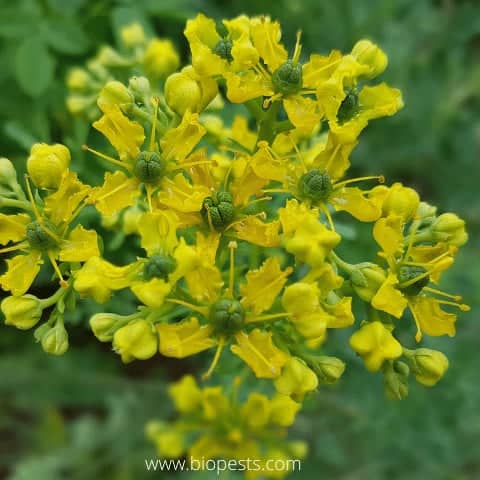
It is a perennial herb pretty easy to grow. It loves well-drained and sun-exposed soils. Its ornamental value is very appreciable and is often inserted in borders of mixed flowers. Again, cats can’t stand the smell. It can also be used in the kitchen, but with caution: in fact, high doses of this plant can be poisonous.
Dictamnus
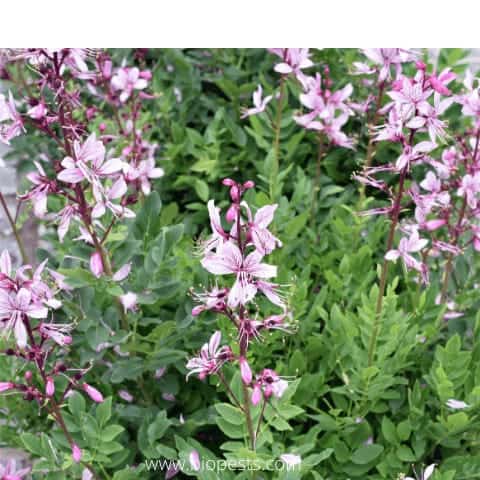
The Dictamnus is a plant that belongs to the Rutaceae family. It has ash-like leaves that are covered with glands that give off a scent of citrus and vanilla. It is very pleasant for humans but unpleasant for cats. This plant likes full sun exposure, even in poor soils. It is very ornamental due to the large spikes of white-pink flowers that it produces in summer.
But be careful not to let children play with these plants. Rubbing the leaves on the skin can cause irritation.
Some of the links above are affiliate links, meaning, at no additional cost to you, I will earn a commission if you click through and make a purchase.

